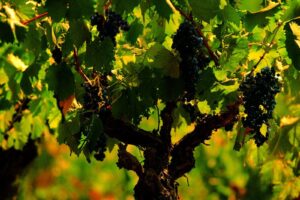
Barolo in the lead, the wines of the Langhe, passing through Barbaresco and other variations of Nebbiolo have the wind in their sails. Looking at the king of Piedmont wines, “in 2021 we made +21% on 2020, putting 16 million bottles on sale. That is the 14 million bottles of Barolo that are produced each year, plus a few older vintages. In 2022 we went back to the 14 million bottles, which is then the average production each year, simply because we couldn’t make more. We’ve ended up with empty cellars for two years now, stocks are at an all-time low. 2023 is off to a pretty good start as a result, then from here to the future with all the unknowns there are between war, inflation, purchasing power dropping and so on, it’s hard to say. But we are hopeful. The appellation is in balance because there is more demand than supply of product, the price of bulk Barolo is steadily rising (the 2018 vintage, according to September/October 2022 data from the Cuneo Chamber of Commerce speak of a range between 878 and 947 euros per hectoliter, ed.), but there is practically no trade, and basically that’s what we wanted”. So spoke Matteo Ascheri, president of the Consortium of Barolo and Barbaresco, at the closing of “Grandi Langhe 2023”, a kermesse that, for the second time, was staged in Turin at the Ogr-Officine Grandi Riparazioni on January 30 and 31, promoted by the Consorzio di Tutela Barolo, Barbaresco, Alba, Langhe and Dogliani, together with the Consorzio di Tutela del Roero, with the support of Regione Piemonte and Intesa San Paolo, which presented the new vintages of the territory's major grape varieties, the Nebbiolo king in primis (and, more specifically, Barolo 2019 and Riserva 2017, Barbaresco 2020 and Riserva 2018; Roero 2020 and Riserva 2019, Roero Arneis 2022 and Riserva 2020). More than 240 wineries participated in the beautiful late 19th-century former industrial complex-now a hub of innovation and art-ready to welcome wine merchants, restaurateurs, commercial agents, sommeliers and selected buyers from more than 30 countries including the U.S., Canada, Australia, Brazil, Japan and India. Where they talked about wine, the market but also about work in the vineyard and agriculture, in the conference “Changes”.
Telling its story was a wine fabric that is strong on the market, therefore, and full of history. 10,000 hectares of vineyards are registered with the Consortium for the Protection of Barolo Barbaresco Alba Langhe Dogliani, where 542 wineries produce 66 million bottles of wine in the 9 protected appellations, from Barolo (more than 2,200 hectares) to Barbaresco (more than 800 hectares), from Dogliani to Dolcetto di Diano d’Alba, from Barbera d’Alba to Langhe (more than 2. 300 hectares, of which more than 900 are Langhe Nebbiolo), from Dolcetto d'Alba to Nebbiolo d’Alba and Verduno Pelaverga; there are, on the other hand, 1,300 hectares of vineyards within the Roero Protection Consortium, for 7.5 million bottles produced by 250 wineries, in the 5 types in which the appellation is expressed, from Roero Bianco to Roero Bianco Riserva, Roero Rosso to Roero Rosso Riserva and Roero Spumante.
As in few other Italian wine territories, through the new vintages in the glasses of the great wines of Langhe and Roero and together with the voices of the symbolic producers of Italy's first Unesco World Heritage wine territory, important pages in the history of Italian wine can be told, starting in the mid-19th century, when the Marchioness of Barolo Giulia Colbert Falletti and Camillo Benso Conte di Cavour - as the Unification of Italy was being born - started the production of Barolo (loved by the Savoy family, the first Kings of Italy, and also produced by the President-winemaker par excellence, among the fathers of the Italian Republic, Luigi Einaudi), to the present day.
WineNews, from “Grandi Langhe 2023”, has begun to compose - along with the tastings we are going to do in the editorial office - the monograph in March 2023 of “I Quaderni di WineNews” dedicated to Barolo, and, in the meantime, presents a first taste of the “walk-around tasting” in Turin, with wines that impressed us the most:
Ascheri, Barolo Sorano 2019
Bava, Barolo Scarrone 2019
Ca’ viola, Barolo Sottocastello di Novello 2019
Cascina Chicco, Roero Valmaggiore Riserva 2019
Conterno Fantino, Barolo Castelletto Vigna Pressenda 2019
Cordero di Montezemolo, Barolo Gattera 2019
Damilano, Barolo Lecinquevigne 2018
Diego Morra, Barolo San Lorenzo di Verduno 2019
Domenico Clerico, Barolo Del Comune di Serralunga d’Alba Aeroplanservaj 2019
Elvio Cogno, Barolo Ravera 2019
Ettore Germano, Barolo Cerretta 2019
G.D. Vajra, Barolo Bricco delle Viole 2019
Giovanni Rosso, Barolo Cerretta 2019
Michele Chiarlo, Barolo Cerequio 2019
Mura Mura, Barbaresco Starderi 2019
Parusso, Barolo Perarmando 2019
Pasquale Pelissero, Barbaresco Cascina Crosa 2020
Pio Cesare, Barbaresco Il Bricco 2019
Gianni Gagliardo, Barolo Lazzarito Vigna Preve 2019
Produttori del Barbaresco, Barbaresco 2019
Ratti, Barolo Marcenasco 2019
Giovanni Sordo, Barolo Perno 2019
Marchesi di Gresy, Barbaresco Martinenga 2020
Vietti, Barolo Castiglione 2019
Copyright © 2000/2025
Contatti: info@winenews.it
Seguici anche su Twitter: @WineNewsIt
Seguici anche su Facebook: @winenewsit
Questo articolo è tratto dall'archivio di WineNews - Tutti i diritti riservati - Copyright © 2000/2025